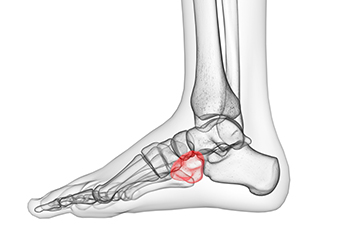
Cuboid syndrome or cuboid subluxation is when the joints and ligaments near the cuboid bone in the foot become injured or torn. Most commonly with cuboid syndrome, pain is felt on the side of the foot where the baby toe is. The discomfort might be greater when you put weight on the side of the affected foot, when you push on the arch of the foot, or pain might spread to other parts of the foot when you stand on the front of the toes. There may be redness and swelling near the site, as well as loss of movement or weakness in the ankle or side of the foot. One might also change the way they walk (such as limping or swaying from side to side) due to the pain they feel. This syndrome may be caused when the cuboid bone moves outward from the foot while the heel bone moves inward, which may dislocate one or more bones or tear nearby ligaments. It can happen from an ankle sprain, injury, overuse or repetitive strain on the foot, or flat feet. Athletes who participate in sports involving jumping, running, or moving from side to side are prone to cuboid syndrome. This condition can also occur from being overweight, having arthritis or osteoporosis, wearing shoes that are too tight or not sufficiently supportive, not stretching the foot properly before a workout or resting it long enough before engaging in physical activity again, or doing activity on surfaces that are not flat. If you think you might have cuboid syndrome or your foot hurts for longer than what might be a normal recuperation period, see a podiatrist for a proper diagnosis and treatment.
Cuboid syndrome, also known as cuboid subluxation, occurs when the joints and ligaments near the cuboid bone in the foot become torn. If you have cuboid syndrome, consult with Brian Shwer, DPM from Southaven Foot Clinic. Our doctor will assess your condition and provide you with quality foot and ankle treatment.
Cuboid syndrome is a common cause of lateral foot pain, which is pain on the outside of the foot. The condition may happen suddenly due to an ankle sprain, or it may develop slowly overtime from repetitive tension through the bone and surrounding structures.
Causes
The most common causes of cuboid syndrome include:
Symptoms
A common symptom of cuboid syndrome is pain along the outside of the foot which can be felt in the ankle and toes. This pain may create walking difficulties and may cause those with the condition to walk with a limp.
Diagnosis
Diagnosis of cuboid syndrome is often difficult, and it is often misdiagnosed. X-rays, MRIs and CT scans often fail to properly show the cuboid subluxation. Although there isn’t a specific test used to diagnose cuboid syndrome, your podiatrist will usually check if pain is felt while pressing firmly on the cuboid bone of your foot.
Treatment
Just as the range of causes varies widely, so do treatments. Some more common treatments are ice therapy, rest, exercise, taping, and orthotics.
If you have any questions, please feel free to contact our office located in Southaven, MS . We offer the newest diagnostic and treatment technologies for all your foot care needs.
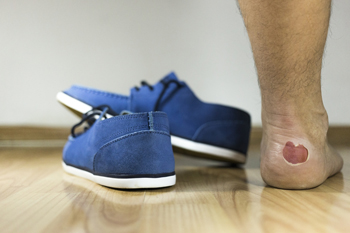
There is a medical condition that is known as dyshidrotic eczema which can produce blisters on the feet. They are generally itchy and can last several weeks. The blisters may appear on the soles of the feet or between the toes and are often uncomfortable. The first signs this ailment may be developing consist of a burning or prickly sensation on the skin of the feet. It is a long-term condition that can disappear over time and then reappear. The skin often becomes dry and using a good moisturizer may help the skin to feel better. It is beneficial to wear socks or stockings that are made from cotton or silk and to refrain from wearing any type of nylon. Additionally, it can help to wear shoes that are made from leather materials and to refrain from using harsh detergents while washing the socks. If you have a chronic condition where blisters appear on your feet, it is strongly suggested that you consult the expertise of a podiatrist who can guide you toward the correct treatment techniques.
Blisters may appear as a single bubble or in a cluster. They can cause a lot of pain and may be filled with pus, blood, or watery serum. If your feet are hurting, contact Brian Shwer, DPM of Southaven Foot Clinic. Our doctor can provide the care you need to keep you pain-free and on your feet.
Foot Blisters
Foot blisters are often the result of friction. This happens due to the constant rubbing from shoes, which can lead to pain.
What Are Foot Blisters?
A foot blister is a small fluid-filled pocket that forms on the upper-most layer of the skin. Blisters are filled with clear fluid and can lead to blood drainage or pus if the area becomes infected.
Symptoms
(Blister symptoms may vary depending on what is causing them)
Prevention & Treatment
In order to prevent blisters, you should be sure to wear comfortable shoes with socks that cushion your feet and absorb sweat. Breaking a blister open may increase your chances of developing an infection. However, if your blister breaks, you should wash the area with soap and water immediately and then apply a bandage to the affected area. If your blisters cause severe pain it is important that you call your podiatrist right away.
If you have any questions, please feel free to contact our office located in Southaven, MS . We offer the newest diagnostic and treatment technologies for all your foot care needs.
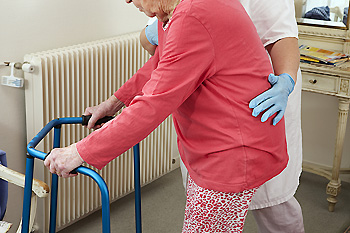
Seniors may be able to remain independent longer when fall prevention techniques are incorporated into their daily routine. These can include performing exercise programs that can help to strengthen the body as well as balancing stretches at home. Additionally, many elderly people make changes to their living environment, including removing frayed rugs and improving lighting in the household. Other effective methods to prevent falling consist of having a grab bar installed in the toilet and shower areas, and it can help to use a non-slip bath mat. It is suggested that physical and eye examinations be performed regularly, and this can help to update existing medication and eyeglass prescriptions. Falling episodes may be lessened when the correct shoes are worn and clutter in the home is cleared. Falling can impact the feet negatively so it is important to learn how to prevent a fall from occurring. If you would like more information about how to prevent falls, please consider speaking with a podiatrist.
Preventing falls among the elderly is very important. If you are older and have fallen or fear that you are prone to falling, consult with Brian Shwer, DPM from Southaven Foot Clinic. Our doctor will assess your condition and provide you with quality advice and care.
Every 11 seconds, an elderly American is being treated in an emergency room for a fall related injury. Falls are the leading cause of head and hip injuries for those 65 and older. Due to decreases in strength, balance, senses, and lack of awareness, elderly persons are very susceptible to falling. Thankfully, there are a number of things older persons can do to prevent falls.
How to Prevent Falls
Some effective methods that older persons can do to prevent falls include:
Falling can be a traumatic and embarrassing experience for elderly persons; this can make them less willing to leave the house, and less willing to talk to someone about their fears of falling. Doing such things, however, will increase the likelihood of tripping or losing one’s balance. Knowing the causes of falling and how to prevent them is the best way to mitigate the risk of serious injury.
If you have any questions, please feel free to contact our office located in Southaven, MS . We offer the newest diagnostic and treatment technologies for all your foot care needs.
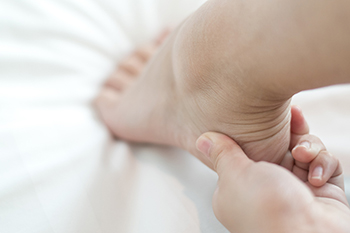
Children and young teenagers who participate in running and jumping activities can be prone to developing Sever’s disease. This foot condition impacts the heel and typically affects children between the ages of 8 and 13. The Achilles tendon connects the heel to the calf muscles, and Sever’s disease may occur when the growth plate in the heel grows faster than the Achilles tendon. It is considered to be an overuse injury and can affect children who run and jump on hard surfaces. Effective prevention techniques include wearing quality shoes that fit correctly and have shock-absorbent soles, maintaining a healthy weight, and performing specific stretches for the heel. One such stretch, the heel drop, is accomplished by standing on a step and lowering one heel at a time until a gentle stretch is felt. If your child has heel pain, it is strongly suggested that he or she is under the care of a podiatrist who can effectively manage this condition.
Because RA affects more than just your joints, including the joints in your feet and ankles, it is important to seek early diagnosis from your podiatrist if you feel like the pain in your feet might be caused by RA. For more information, contact Brian Shwer, DPM of Southaven Foot Clinic. Our doctor will assist you with all of your podiatric concerns.
What Is Rheumatoid Arthritis?
Rheumatoid Arthritis (RA) is an autoimmune disorder in which the body’s own immune system attacks the membranes surrounding the joints. Inflammation of the lining and eventually the destruction of the joint’s cartilage and bone occur, causing severe pain and immobility.
Rheumatoid Arthritis of the Feet
Although RA usually attacks multiple bones and joints throughout the entire body, almost 90 percent of cases result in pain in the foot or ankle area.
Symptoms
Diagnosis
Quick diagnosis of RA in the feet is important so that the podiatrist can treat the area effectively. Your doctor will ask you about your medical history, occupation, and lifestyle to determine the origin of the condition. Rheumatoid Factor tests help to determine if someone is affected by the disease.
If you have any questions please feel free to contact our office located in Southaven, MS . We offer the newest diagnostic and treatment technologies for all your foot and ankle needs.
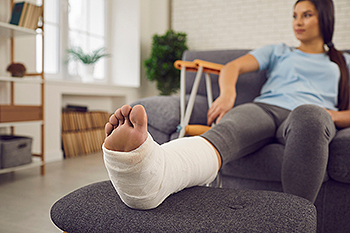
A fracture, which is a break or crack in a bone, can vary greatly in type and level of severity. Symptoms of fractures include redness, swelling, pain, and difficulty/inability to bear weight. If you believe you have sustained a foot or ankle fracture, please seek medical help immediately. Among the types of fractures are displaced bone, stress fracture, pathological fracture, or compound or open fracture. A displaced bone fracture occurs when the broken ends of a bone move away from each other. Conversely, with a stress fracture the bone cracks but stays intact. A pathological fracture may be the result of a disease or condition that weakens the bone. Among the causes are cancer and osteoporosis. A fracture can occur simply as a result of ordinary daily activities, absent any extreme force or trauma. A compound fracture creates an open wound when the bone is pushed through the skin as the result of trauma. These are extremely serious fractures and it is suggested you get immediate attention as soon as possible. A podiatrist can examine, diagnose and treat it properly.
Foot and ankle trauma is common among athletes and the elderly. If you have concerns that you may have experienced trauma to the foot and ankle, consult with Brian Shwer, DPM from Southaven Foot Clinic. Our doctor will assess your condition and provide you with quality foot and ankle treatment.
Foot and ankle trauma cover a range of injuries all over the foot; common injuries include:
Symptoms
Symptoms of foot and ankle injuries vary depending on the injury, but more common ones include:
Diagnosis
To properly diagnose the exact type of injury, podiatrists will conduct a number of different tests. Some of these include sensation and visual tests, X-rays, and MRIs. Medical and family histories will also be taken into account.
Treatment
Once the injury has been diagnosed, the podiatrist can than offer the best treatment options for you. In less severe cases, rest and keeping pressure off the foot may be all that’s necessary. Orthotics, such as a specially made shoes, or immobilization devices, like splints or casts, may be deemed necessary. Finally, if the injury is severe enough, surgery may be necessary.
If you have any questions, please feel free to contact our office located in Southaven, MS . We offer the newest diagnostic and treatment technologies for all your foot care needs.
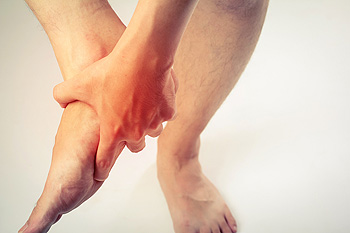
If you are experiencing pain along the inside of the arch on your foot, it may be caused by a strain of the abductor hallucis muscle. Strains can range from a mild stretch to a complete tear or rupture. Symptoms include pain and tenderness when you press the sole of the foot especially on the inside, as well as swelling and loss of function depending on the severity. The abductor hallucis muscle runs from the heel to the big toe. Its main job is to support the arch and keep it from rolling inward, also known as overpronation, with each step. A mild strain may go away after a few days with rest from the activity that caused it. Icing the affected foot may also help relieve the pain. If the symptoms continue or worsen, it is a good idea to see a podiatrist for an examination. Treatment may include anti-inflammatory medication, ultrasound therapy, or custom orthotics.
Foot Pain
Foot pain can be extremely painful and debilitating. If you have a foot pain, consult with Brian Shwer, DPM from Southaven Foot Clinic. Our doctor will assess your condition and provide you with quality foot and ankle treatment.
Causes
Foot pain is a very broad condition that could be caused by one or more ailments. The most common include:
Diagnosis
To figure out the cause of foot pain, podiatrists utilize several different methods. This can range from simple visual inspections and sensation tests to X-rays and MRI scans. Prior medical history, family medical history, and any recent physical traumatic events will all be taken into consideration for a proper diagnosis.
Treatment
Treatment depends upon the cause of the foot pain. Whether it is resting, staying off the foot, or having surgery; podiatrists have a number of treatment options available for foot pain.
If you have any questions, please feel free to contact our office located in Southaven, MS . We offer the newest diagnostic and treatment technologies for all your foot care needs.
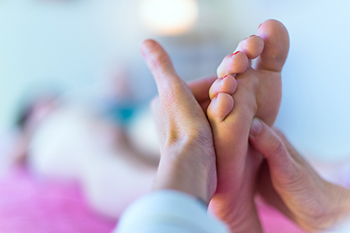
We all have sore feet from time to time. After all, our feet do a lot of work for us and put in long hours. There are a variety of ways to soothe sore feet at home. Generally, using a combination of treatments work best to revitalize sore feet. Warm foot baths using Epsom salts can relieve swollen, painful feet. Stretching the toes and heels can aid with foot pain by increasing flexibility and preventing cramping. Foot pain can be avoided by strengthening and resistance exercises to help keep feet strong and limber. Orthotics or arch supports can help stabilize the feet and eliminate discomfort. Simple icing of aching feet can reduce inflammation that may be caused by soreness. Wearing night splints can help with keeping feet stretched properly to avoid or control foot pain. If you have painful, achy feet or tingling or numbness in your feet, a podiatrist should be consulted and treatment prescribed.
Foot therapy is often necessary for those recovering from either foot deformities or foot injuries. If you have concerns regarding therapy, consult with Brian Shwer, DPM from Southaven Foot Clinic. Our doctor can provide the care you need to keep you pain-free and on your feet.
Most Common Injuries
People who are active or athletes are prone to a variety of injuries. Therefore, it is often important to take part in physical therapy in order to quickly get back on the right track.
What to Do When Injured
Physical Therapy – This specialized treatment will focus on the affected area, speeding up recovery and the overall healing process. It is a proven method that has helped millions of people return from any injury.
During physical therapy you will undergo regimented training to get back into full form. Training is often very difficult, especially at first when the foot feels weak. Physical therapy often involves:
Basic stretching and twisting exercises – getting the feet’s mobility and flexibility up.
Massaging – the therapist will massage the injured area in order to activate the muscles and relax them.
Strengthening Exercises – this allows the muscles in the affected area to regain their full strength, a vital step towards full recovery.
If you have any questions please feel free to contact our office located in Southaven, MS . We offer the newest diagnostic tools and technology to treat your foot and ankle needs.

The heel condition that is referred to as Sever’s disease generally affects children and young teenagers who are involved in sporting activities. The heel can often feel sore when Sever’s disease is present, and it may be difficult to walk. It is defined as a condition that affects the growth plate in the heel, and can be confirmed by having a physical examination performed. Relief is often found when the activity that caused the condition is stopped, and the heel is frequently rested. It is important to practice specific stretches once the heel feels better, and this may help to accelerate the recovery process. Many patients choose to wear a heel cushion in their shoe which may be able to provide additional padding. If your child is affected by Sever’s disease, it is advised that a podiatrist be consulted for proper prevention and healing tips.
Sever's disease often occurs in children and teens. If your child is experiencing foot or ankle pain, see Brian Shwer, DPM from Southaven Foot Clinic. Our doctor can treat your child’s foot and ankle needs.
Sever’s Disease
Sever’s disease is also known as calcaneal apophysitis, which is a medical condition that causes heel pain I none or both feet. The disease is known to affect children between the ages of 8 and 14.
Sever’s disease occurs when part of the child’s heel known as the growth plate (calcaneal epiphysis) is attached to the Achilles tendon. This area can suffer injury when the muscles and tendons of the growing foot do not keep pace with bone growth. Therefore, the constant pain which one experiences at the back of the heel will make the child unable to put any weight on the heel. The child is then forced to walk on their toes.
Symptoms
Acute pain – Pain associated with Sever’s disease is usually felt in the heel when the child engages in physical activity such as walking, jumping and or running.
Highly active – Children who are very active are among the most susceptible in experiencing Sever’s disease, because of the stress and tension placed on their feet.
If you have any questions, please feel free to contact our office located in Southaven, MS . We offer the newest diagnostic and treatment technologies for all your foot and ankle injuries.